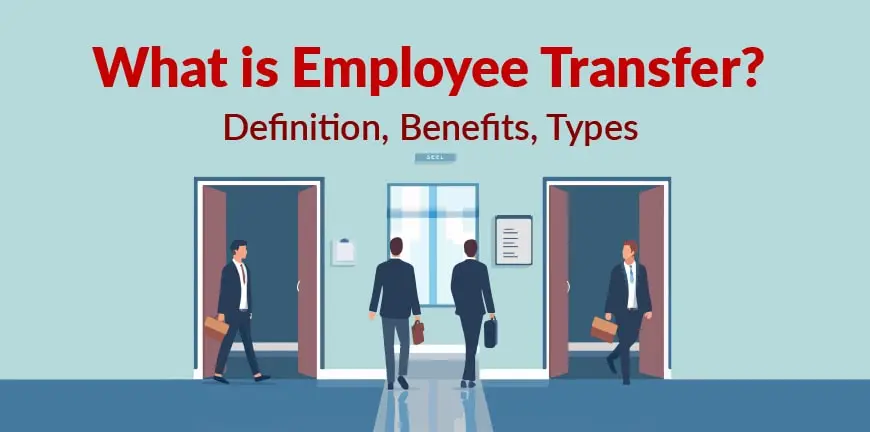
What is Mobile Workforce Management? Benefits & Key Trends in 2025
22/04/2025
Compliance Policies & Procedures: Types, Examples, Benefits, Key Elements
24/04/2025Powered by one of the youngest workforces on the planet, India is riding the demographic wave pacing to reach the pinnacle of global prominence. The country possesses every component required for long-term success. But there is a big threat that seems to be impacting the growth momentum. It is a growing skills gap that is pulling the brakes on the progress trajectory.
As industries rapidly march towards automation, AI, and digital innovation, innumerable job seekers are in doldrums as they lack the skills needed to match up to the evolving market. The result is quite concerning. There is a mismatch existing between employer expectations and the potential of the current workforce.
Understanding the Skills Gap
In India skills shortage is multidimensional with millions of youths getting an entry into the job market each year, but most of them don’t possess the industry-relevant skills to secure employment. Employers across sectors like IT, manufacturing, healthcare, and renewable energy are finding it difficult to find qualified talent. A report by the National Skill Development Corporation (NSDC) stated that nearly 50% of Indian graduates are not employable in the knowledge economy due to dearth of soft skills, practical training, and digital literacy.
Skill Shortage: In 2025, 80% of employers reported difficulty in finding skilled professionals, a figure higher than the global average of 74%.
What are the Sectors Impacted by Skills Gap?
1. Healthcare Sector: Shortage of Professionals
India’s healthcare sector is grappling with a severe shortage of professionals. This shortage highlights the immediate need for intervention to address the increasing demand for healthcare services.
Many parts of India, especially rural and semi-urban areas, continue to operate with lower doctor to population ratios. The shortage is even more striking when it comes to nurses, paramedics and mental health professionals. This leaves considerable gaps in patient care and service delivery.
2. Semiconductor Manufacturing: A Strategic Industry
India is making its mark as a key player in the global semiconductor supply chain. Global conglomerates like Micron, Foxconn, and Tower Semiconductor plan to make significant investments in the country. However, this industry is challenged in terms of the shortage of skilled workers required to operate these semiconductor fabrication plants, especially in the initial stage.
3. Green Talent shortage
The global shift toward sustainability is rapidly gaining momentum with Environmental, Social, and Corporate Governance (ESG) surfacing as critical areas for businesses, investors, and governments alike.
In India too the demand for ESG professionals is accelerating and regulatory pressure, investor expectations and a collective push toward responsible growth drives the demand. However, the country’s green ambitions are hitting a roadblock due to significant talent gap in the sector.
Organizations are actively seeking professionals skilled in sustainability reporting, carbon accounting, renewable energy policy, corporate ethics, and social impact analysis. It is unfortunate that there is a dearth of individuals possessing domain expertise and practical experience in these complex, interdisciplinary areas.
4. Agricultural Sector: Embracing Technology
India’s agricultural sector is at a turning point where it is adopting technologies like drones, aerial imaging, and robotics for precision farming. However, there is a severe shortage of skilled workers in these areas.
As per NASSCOM prediction, the Indian drone market will reach USD 805 million by 2026, however, only 5% of workers possess the required skills. This underscores the urgent need for skill development in areas like drone operation, precision agriculture and robotics maintenance.
Government Initiatives: Tackling the Skills Gap
Realizing and recognizing the severity of the situation, several ambitious initiatives have been launched by the Indian government that aims at transforming the country’s skilling ecosystem.
1. Skill India Mission
The Skill India Mission launched in 2015, focuses on training people in various skills through programs like the Pradhan Mantri Kaushal Vikas Yojana (PMKVY) which has trained over 15.7 million people and certified more than 12.1 million, focusing on Industry 4.0 skills including AI and robotics.
2. National Education Policy (NEP) 2020
This policy integrates vocational education into mainstream schooling, aiming for over 50% of secondary and tertiary students to have access to vocational training by 2025, aligning education with industry standards.
3. Skill India Digital Hub Platform
The platform was launched in 2023, it promotes digital skills through e-learning and advanced technologies like AI and augmented reality, advancing continuous learning.
4. Union Budget 2025-26
In the recent Union Budget, the government made a dramatic decision by raising the funding for skill development, allocating Rs 3,000 crores for upgrading Industrial Training Institutes (ITIs) from Rs 294 crores previously and establishing five National Centers of Excellence for skilling, including a dedicated Centre of Excellence for AI with Rs 500 crore funding.
5. Jan Shiksha Sansthan (JSS)
Focuses on vocational training for marginalized groups, enhancing inclusivity in skill development.
What are the Emerging Trends and Focus Areas?
1. Soft Skills and Employability
In today’s day and age, technical skills alone cannot do the magic. If you are a candidate you need to possess other skills including problem-solving abilities, communication skills, adaptability and emotional intelligence. Employers are highly seeking to integrate programs entailing soft skills.
2. Upskilling and Reskilling
In a world where automation and AI are reshaping industries, reskilling the existing workforce is vital. Government and private players are promoting and encouraging lifelong learning models, that offer modular courses enabling employees to upgrade without leaving their jobs.
3. Rural and Inclusive Skilling
To empower the rural youth with market-relevant skills, initiatives like Deen Dayal Upadhyaya Grameen Kaushalya Yojana (DDU-GKY) have been introduced alleviating urban-rural skill disparities and enhancing employment in remote areas.
India is proactive in terms of addressing skills shortages, especially with its large and youthful population. However, an array of challenges still obstructs in fully bridging the skills gap. Here are the key ones:
4. Mismatch
There is an increasing mismatch in curriculum or what is taught and the industry requirements. There is barely any focus on practical, hands-on training in many educational institutions.
5. Underqualification
There are several vocational training centers which struggle to cope with outdated infrastructure and under-qualified trainers. The certification they possess does not often hold industry credibility.
6. Low Awareness
Traditional vocational paths are still prioritized over skill-based learning by parents and students. Vocational and skill-based education is often viewed as inferior to academic degrees.
7. Urban-Rural Divide
There is a constant conflict between urban and rural areas as most of the training centers and job opportunities are in urban areas. The rural youth and workforce face challenges in attaining quality training and employment.
8. Digital Divide
Although digitization has taken over India, there are several remote areas which does not receive internet access. This limits the upskilling in rural and remote regions restricting participation.
9. Gender Gap
In rural areas, women must face challenges and fight barriers like societal norms, safety issues hindering them to participate in vocational programs.
10. Rapid Technological Change
In this world of superfast evolution of technologies featuring AI, automation and Industry 4.0 its difficult to keep pace and keep the training content current.
The Road Ahead
India should be poised to take a strategic and inclusive approach to skill development to transform its demographic dividend into economic advantage, India’s economy is projected to grow at 7.8% in FY 2024-25, creating a favorable environment for innovation and talent development.
There must be regular industry consultation keeping educational and vocational curricula relevant. The country with its stakeholders must focus on integrating technologies like AI, data science, green energy, and robotics into training programs. There is an increasing need of collaborate with corporates and startups to co-design training modules.
A big push should be given to access learning platforms in regional languages. Investment in digital infrastructure, especially in rural and remote areas is essential. Other approaches like conduct tailored programs for women, individuals with disabilities and marginalized communities. The country should offer flexible training hours, childcare support, and safe transport for women.
The national employability rate: Increased by 54.81% in 2025, up from 51.25% in 2024
Navigating India’s journey to bridge its skills gap is complex but has immense potential. Bridging the skills gap is not just about gaining economic traction but about social inclusion, equity, and national progress.
This can be well achieved by the implementation of focused policy, private collaboration, and tech-driven innovation. India is already on the pathway to convert this challenge into an opportunity. Our workforce is gearing up to get the future ready!
Contact Us For Business Enquiry

Rajkumar Shanmugam
Rajkumar Shanmugam is the Head of HR at ALP Consulting, bringing over 19 years of comprehensive HR leadership experience across India and international markets. His expertise spans talent acquisition, employee relations, performance management, compliance, and HR transformation. Rajkumar has a proven track record of driving people-centric initiatives, enhancing workplace culture, and aligning HR strategy with business goals. With extensive experience in US staffing operations and global mobility, he continues to lead organizational excellence through innovation and employee engagement.




